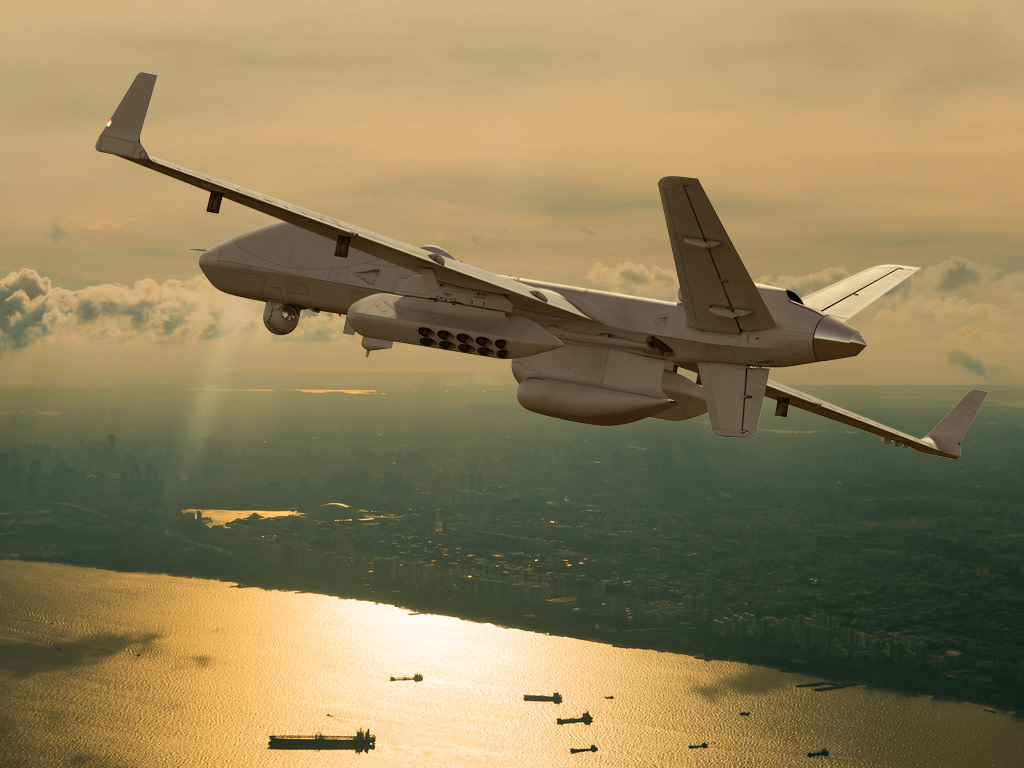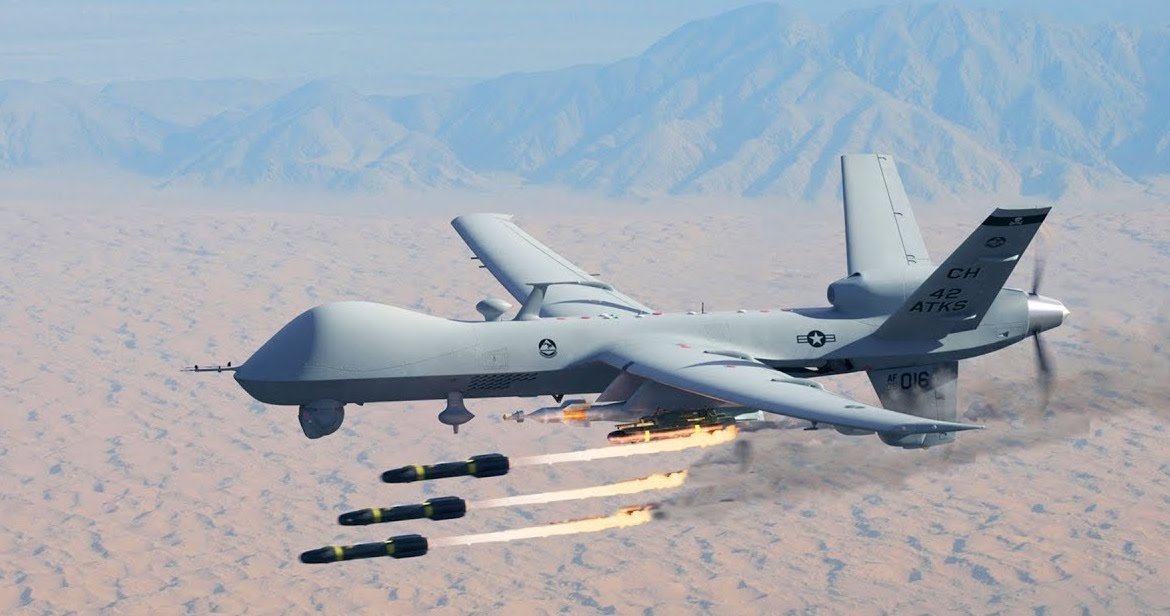India had finalized a plan to acquire 30 armed MQ-9B Sea Guardian/Sky Guardian drones, better known as the Predator-B drones, from the US in June 2019. Under this mega-deal, the Indian Army, the Navy, and the Air Force would each acquire 10 Predator Unmanned Aerial Vehicles (UAVs).
Satellite Image Reveals ‘Chinese Predator Drones’ Armed With Hellfire-Type Missiles Stationed At Pakistani Airbase
However, two years on, India is still not in possession of the combat drones due to a lack of clarity on certain issues.
A ‘Hunter-Killer’ Drone
Designed by US defense company General Atomics Aeronautical Systems (GA-ASI), MQ-9B SkyGuardian is the latest addition to the MQ-9 series.
It can perform over-the-horizon, medium-altitude, long-endurance (MALE) intelligence, survey, and reconnaissance (ISR). The drone’s 2,721 kg fuel capacity and 45 kVA power, alongside 2 kW backup power is a testament to its endurance.
It also comes with a Honeywell TPE331-10 Turboprop engine and special features such as GA-ASI Lynx multi-mode radar, precision-guided munitions, de-ice/anti-ice system, all-weather tolerability (including lightning protection), a fatigue and damage tolerant airframe, and a 40,000-hour service life among others.

The MQ-9B SeaGuardian also has similar features and specifications, but it comes with a 360 degrees maritime surveillance radar instead of or in addition to GA-ASI Lynx multi-mode radar.
With India’s persisting tensions with China and Pakistan, both on the maritime and land frontiers, these drones are quite a bit of a necessity to boost the country’s sea and land defenses.
Gathering intelligence of potential threats from sensitive, geopolitically crucial areas through reconnaissance and survey are both of prime importance to secure the country’s borders and immediate surroundings.
Speaking at a webinar, Indian Army Chief Manoj Mukund Naravane highlighted how drones can play an offensive role and challenge traditional weapon platforms such as tanks, artillery, and the dug-in infantry.
Clash Of F-35s: Why British F-35B Jets Are Likely To ‘Fall Prey’ To Israeli F-35As In A Dogfight?
What’s Causing The Delays?
Acquiring drones and other military equipment was made easier due to the signing of bilateral pacts with the US such as COMCASA and BECA in 2018 and 2020 respectively.
COMCASA that stands for Communications, Compatibility and Security Arrangement is one of the four foundational agreements that the US signs with its allies.
Its purpose is to enhance interoperability between militaries and facilitate the sale of high-end technology as well. This agreement will be valid till 2028 and will allow the procuring of specialized equipment for encrypted communications with US-origin military platforms.

India has also signed the Basic Exchange and Cooperation Agreement for geo-spatial cooperation (BECA) with the US. This agreement helps India get real-time access to American geospatial intelligence, thus enhancing the accuracy of weapons/systems such as missiles and armed drones.
However, despite these agreements, there is still a substantial delay in getting the drones that India requires. There are two main reasons — the cost of the deal and the length of the process.
The 30 drones are going to cost India a total of $3 billion. Since the cost of this deal through the US’ foreign military sales (FMS) program is quite high, India’s defense ministry wants more clarity on the deal, which is currently quite opaque.
No Retreat! Why Both India & China ‘Simply Refuse’ To Retire Their Vintage MiG-21 & J-7 Fighter Jets?
The ministry has asked for more details on the exact price fixation, the technology transfer that the deal will entail as well as the repair and maintenance facilities that will be established in India for the drones.
The second reason has to do with the length of the process. After receiving better insight into the specifics of the deal, the procurement project will be moved for “acceptance of necessity” (AoN) by the Defence Acquisitions Council (DAC) headed by Defense Minister Rajnath Singh.
Once this is done, the country will issue an actionable Letter of Request to the US administration, which must then respond with a Letter of Offer and Acceptance and notify the US Congress of it. Post this, the final contract will be inked.

Since most of the discussions have already taken place, this process should progress relatively quickly after the clarifications requested by the MoD are provided by the US. According to The Times of India, after an initial 15% downpayment, the process then involves India paying the rest of the amount in installments spread over 5 or 6 years.
In the meanwhile, the Navy is using two unarmed SeaGuardian drones that it leased from the US last year. They are currently being used for long-range surveillance missions over the Indian Ocean Region (IOR).
- Follow EurAsian Times on Google News
- Written by Shreya Mundhra/EurAsian Times Desk




